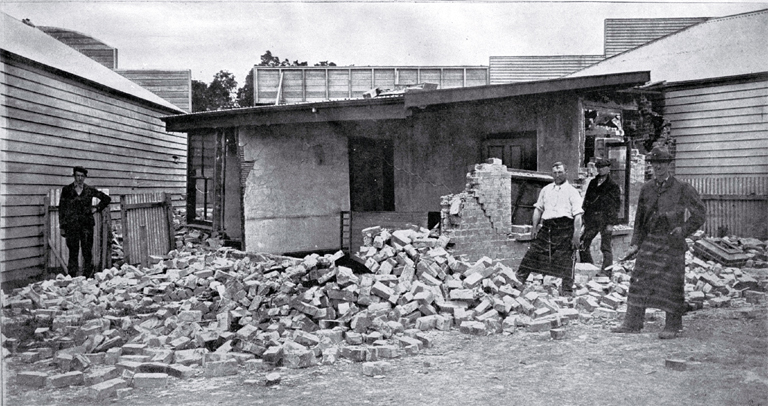History and Earthquakes February 21, 2014
Author: Beach Combing | in : Ancient, Medieval, Modern , trackbackI’ve recently been wasting my time reading about earthquakes in British and Irish history. This does not reflect a new interest in geology, or local plate tectonics. It has rather to do with my perennial fascination for the way that historical sources are utterly unreliable and utterly skewed. When do earthquake records begin? Well, as soon as early Britons or Gaels could string some ogham sentences together you would have thought that they would have been recording the anger of the gods with a vengeance. And to some extent this is true: just to satisfy anyone’s curiosity an Irish earthquake is recorded in 601, Terremotus I mBairchiu, in a delightful hybrid Latin/Old Irish. However, there are three reasons why earthquake history is not as good as it should be.
1) Terms: what is an earthquake? Well, an earthquake is ‘shaking of the ground’. No, no, no. That is hopelessly exact. In the 1750s an English writer defined nine different kinds of earthquake that included, reasonably enough, land slides and volcanic ash falls! In short, there is plenty of room for problems with terminology and just because an Irish annalist writes ‘earthquake in Bairchu’, this does not actually mean the earth shook. It could just have been a cliff, say, that slid down on a hermit or a flock of sheep. Not much happened in Ireland c. 600.
2) Coverage: there is the problem, alluded to above, that you need people to write before you can record earthquakes. That is easy enough to keep track of. But different parts of Britain and Ireland achieved a literate culture in different periods and then in some areas, particularly, the north of Britain (aka Scotland) many early texts were lost. Don’t count on reliable records from Sutherland say before about 1700. At the other side of the scale, South-east England was literate from the first century A.D. and there is a continuous survival of texts from about 800 or 900, notwithstanding the Vikings’ best efforts. The premier British earthquake historian (what a job!) Musson makes the useful distinction between felt-area records and report-area records, pointing out that we are dealing invariably with the second. Brutally, put all the records of medieval earthquakes on a map and you’ll get a crude map of literacy, not a map of seismic activity.
3) Interest: there is also the problem that different periods of history show interest in different matters. For examples, the Dark Age annals from Britain and Ireland are good vehicles for natural wonders like earthquakes. The puritan and royalists propagandists before, during and after the Civil War went crazy about the same for the very simple reason that earthquakes could be manipulated to show that God approved or disapproved of Charles I or Cromwell. A particularly interesting gap in the records appears from the thirteenth century onwards when chronicling is replaced by more conventional history, into which earthquakes don’t fit very easily. The result? We have more documentation from 1200 and yet, paradoxically far fewer records of tremors.
So isn’t this all ‘the bleeding obvious’? Probably. But it seems a particularly nice illustration of why practically every historical survey is plagued by problems and any chin wagging about this or that being simple is almost certainly misguided. The brown-belt historian reads Latin, Mandarin and medieval Welsh. The black belt historian, with a dan in his pocket, knows in their bones how pathetically little we know and is prepared to act on that lack of knowledge. Other earthquake thoughts: drbeachcombing AT yahoo DOT com



